.jpg)



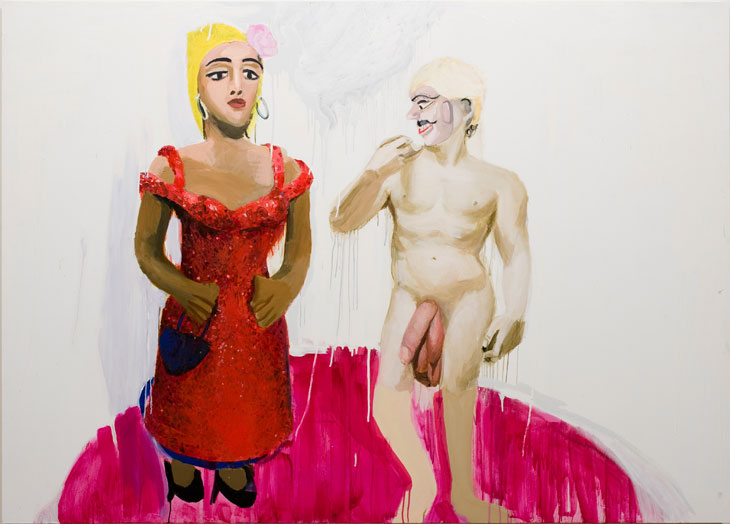
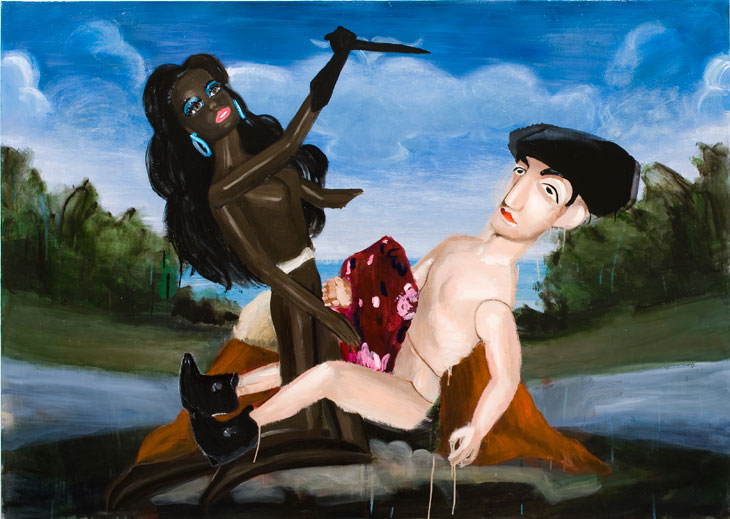
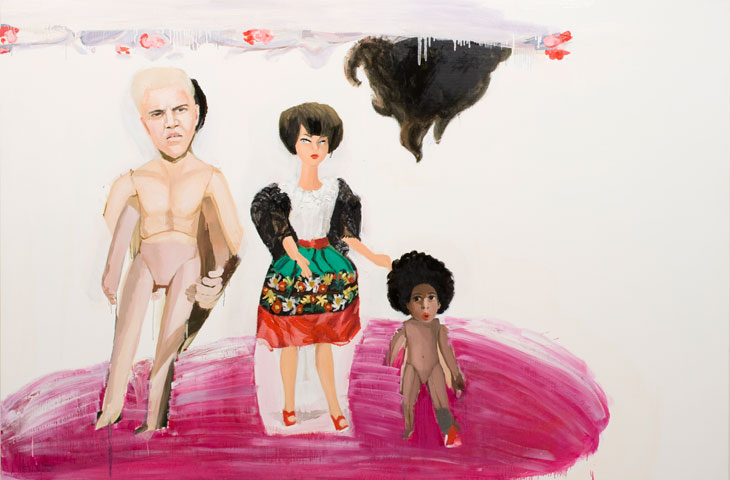
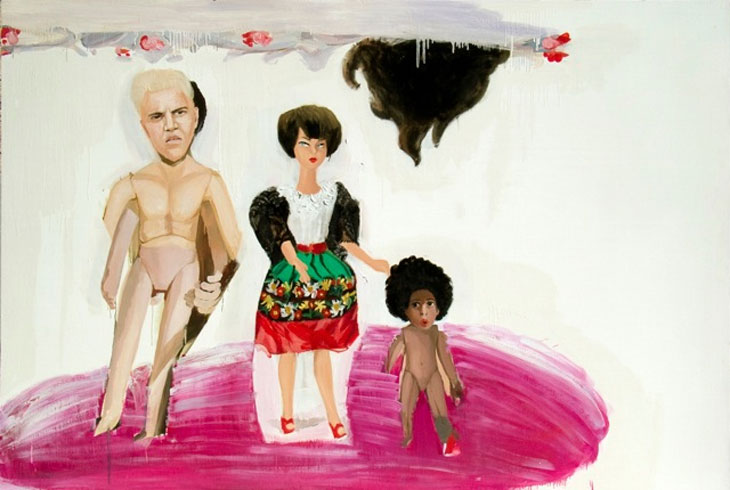
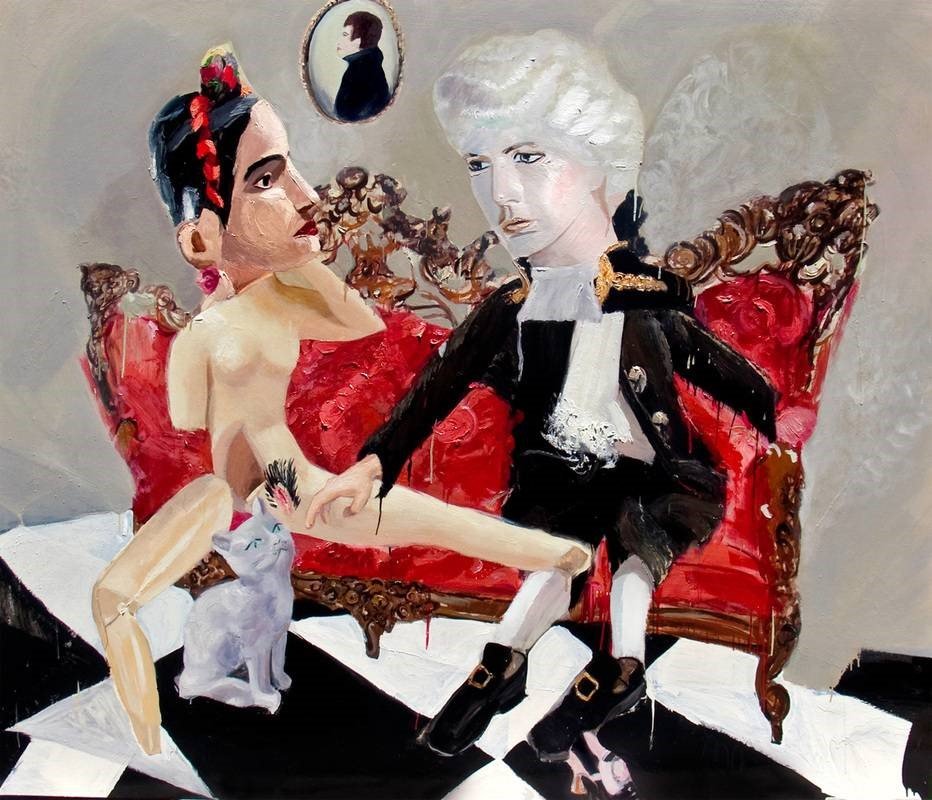

.jpg)
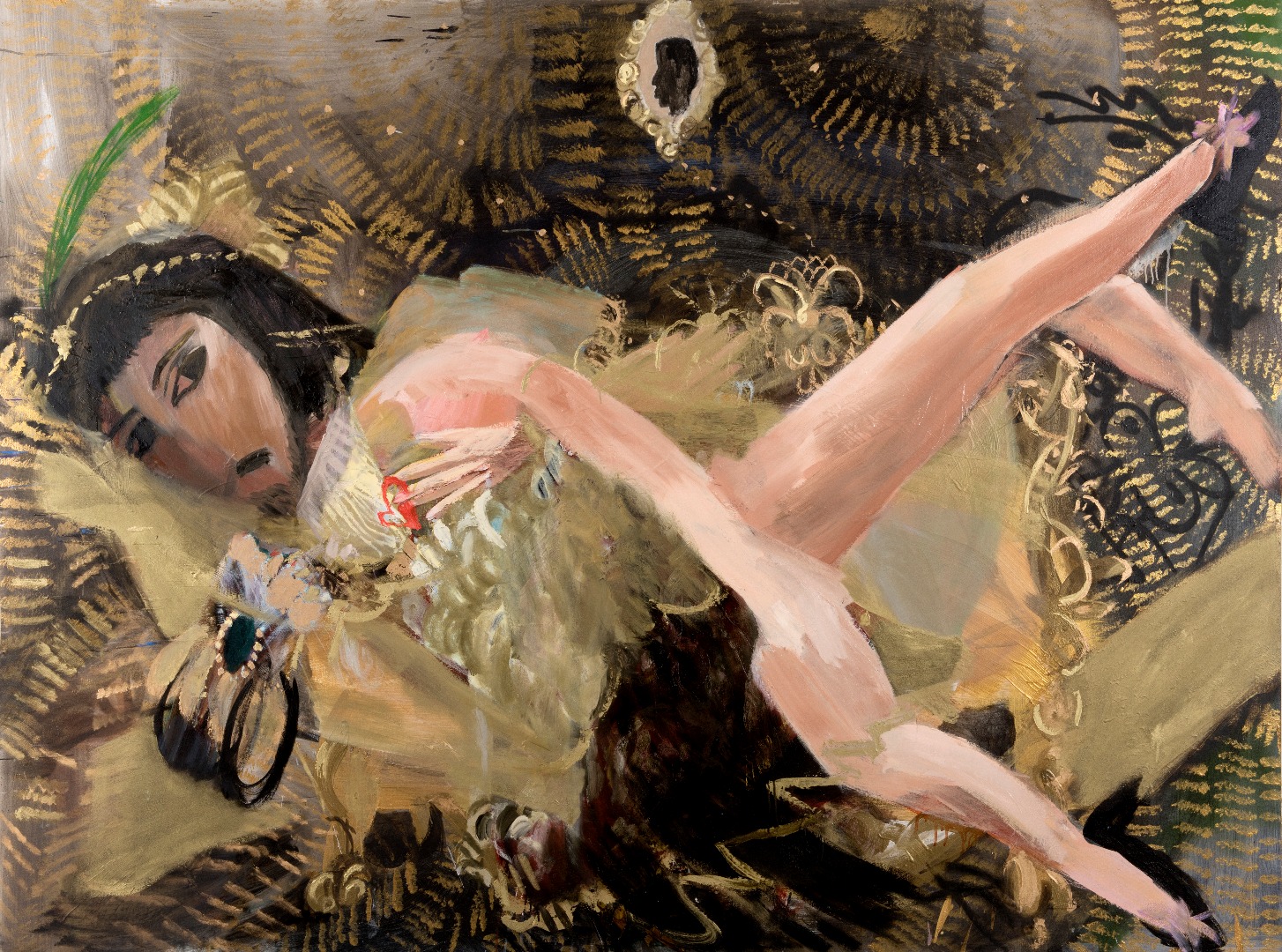
Alida Cervantes
Alida Cervantes’ paintings reimagine the perceived boundaries upon which social, economic, and political conditions remain contingent. Raised in the border city of Tijuana, Mexico, the artist’s home environment instilled from an early age a sense of Mexico’s hierarchical binaries of race, class and culture. Cervantes’ vivid historical paintings mask a reality in which social and political disparities play out on two levels, both within the intimate social structures of the artist’s home life and in the actuality of the political border that constitutes an impenetrable threshold for many Mexican citizens. The city of Tijuana provides the springboard into a painterly investigation of the actions, relationships and perceptions of Mexico’s cross-cultural and multi-ethnic society.
In her series of paintings inspired by Mexico’s casta paintings of the seventeenth and eighteenth century, Cervantes’ imagines the Spanish colonial caste system in Mexico with its strict racial taxonomies and hierarchies. Her engagement with this distinct racial make-up invites the viewer to re-imagine colonial experience by emphasising the deliberate erasure of black bodies from history. Spain’s conquest and subsequent colonisation of Mexico is animated by an overt vulgarity (Matadora, 2011), while other paintings skew representations to complicate classical and abstract formations. The unfolding narrative of domination, subjugation, and submission between individuals plays out through a range of figurative scenarios tainted by sex and violence. Scenes of male castration and bloody revenge that typify the artist’s tongue-in-cheek approach to painting (Horizonte En Calma, 2011) reveal the politics of Mexico’s increasingly hybridised identities.
Cervantes’ work explores the intricacy and intimacy of power using painterly devises to create works of semi-narrative that address age-old dynamics of dominance and submission, an uncomfortable yet inescapable part of human nature. Thus, Cervantes’ paintings adopt a strongly Mexican cultural discourse, as they are implicated within wider narratives of colonial and post-colonial representation. Images of secrecy and intrigue, transgression and subversion, as they exist in the artist’s imagination become sites for the enactment of momentary impulses and sexualised desires. The collision of Catholic, indigenous, and African religious aspects is apparent through expressions of sin, guilt and sacrifice, as they might have been performed in some fantastical place. Cervantes paintings playfully attempt to re-root individuals in an alternative reality, fragmentary characters are imbued with meaningful agency as they revolt against a grand narrative.
© Osei Bonsu, 2014
.jpg)
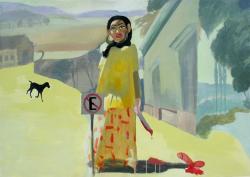
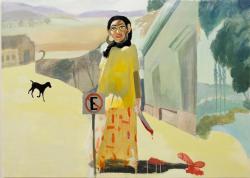







.jpg)
